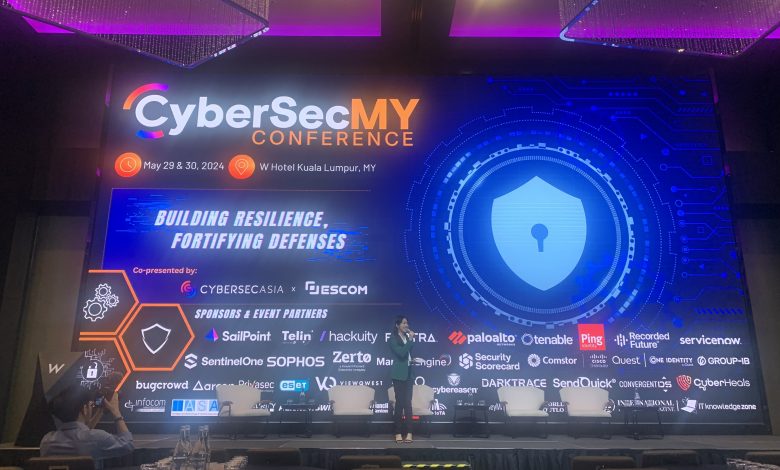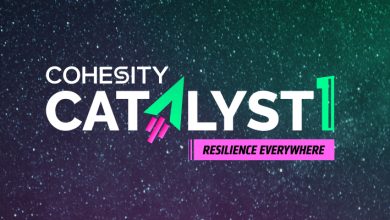CyberSecMalaysia 2024 Conference: The Cybersecurity Landscape Moving in Multiple Directions

It’s great to see Malaysia being at the forefront of cybersecurity and taking the matter so seriously. With the Cybersecurity Bill (2024) being passed just last month, showing a new commitment and enthusiasm to the topic, now we are seeing more conventions and events in Malaysia full of people communicating and spreading their messages. To end the month of May, CyberSecMalaysia 2024 held their conference at W Kuala Lumpur Hotel, with sponsors and vendors from all over ASEAN keen to spread their messaging around cybersecurity. One thing was clear: Vendors are starting to differ and explore multiple avenues of cybersecurity, this shift being brought on by the challenges and opportunities of Artificial Intelligence (AI), no doubt.
Besides hearing from vendors from all around ASEAN, CSA got to hear from local branches and people based in Kuala Lumpur. Opening the event’s keynote was Malaysia’s very own Dato’ Ts Dr Haji Amirudin Abdul Wahab (CEO of CyberSecurity Malaysia), whose speech was about both the challenges and opportunities in Malaysia’s cybersecurity landscape.
In terms of opportunities, Malaysia should very much look at post-quantum cryptography. Technology’s trajectory suggests that attackers may soon have the resources to decrypt encrypted data and break public key schemes. Early investing in post-quantum cryptography measures as precautions could save public and private companies from significant data compromises in the long run.
Regarding other cybersecurity measures, we heard about the various types of protections offered by numerous vendors and partners at their exhibition booths. However, what came as a shock in the keynote speech were the capabilities of AI when it falls into the wrong hands.

Dato’ Dr Amirudin emphasised that virtual privacy would rise in greater importance, presenting another opportunity for cybersecurity vendors to explore. This is due to the new challenge that AI brings: Reality vs deepfake AI. Cases of AI deepfake technology being used to mislead and infiltrate groups, companies, and brands, are becoming increasingly common. Hollywood actors and social media influencers are being misrepresented by hyper-realistic photos and videos of their physical likenesses and voices used in content they never actually created, misleading their fans and the general public. AI is gradually being utilised to digitally distort reality.
Fraudsters and bad actors even use Large Language Models (LLMs) to generate illegitimate profiles, job listings, item listings, etc. Other speakers mentioned that some companies’ security is still so far behind that cyber attackers can find vulnerabilities to exploit without the use of AI. Bad actors utilising AI would be able to act even sooner.
Going around the conference meeting with vendors and their partner booths, we came to understand that there are various views or stances on the best countermeasures against security threats or vulnerabilities. I met with Kailashyar Kumar, Regional Director of Ping Identity, and after learning more about Ping Identity’s solutions and hearing him speak on stage, it became clear that an important message needs to be communicated to the public: Before implementing AI to solve your company’s problems, ensure that your basic vulnerabilities and weaknesses are identified and addressed first. AI is not always necessary for this.
Ping Identity acknowledges that bad actors can utilise AI to create false profiles/identities for phishing activities, which is why they specialise in identity management and fraud detection. Ping Identity’s threat/fraud protection journey follows 3 main steps across their solutions: Prevent, Detect, and Respond.
To ‘Prevent’ fraud, Ping Identity reduces account takeover with multi-factor authentication measures as well as including numerous identification verification measures. ‘Detecting’ threats is a meticulous process achieved by scanning all interactions even before the ‘login’ and continuing throughout each session. Lastly, they ‘Respond’ by reacting to suspicious users by increasing security based on the level of threat the user represents.
 Another group that caught my attention were CyberHeals. Company Director Abdul Hameed introduced me to his team, who were more than happy to show me their platforms and various features. On their main platform, UltraHeals, besides the usual and popular solutions in offensive security services such as pen-testing, red-teaming, vulnerability assessments, and OSINT, what caught my attention was how they utilise AI to go beyond basic cybersecurity and provide insight into a company’s ‘cyber-reputation.’ By providing a domain, CyberHeal uses AI-based resources to scour the Internet for all known views of said domain and ultimately conclude if its public reputation is overall positive or negative. I thought this was quite a unique addition to their service in terms of analytics.
Another group that caught my attention were CyberHeals. Company Director Abdul Hameed introduced me to his team, who were more than happy to show me their platforms and various features. On their main platform, UltraHeals, besides the usual and popular solutions in offensive security services such as pen-testing, red-teaming, vulnerability assessments, and OSINT, what caught my attention was how they utilise AI to go beyond basic cybersecurity and provide insight into a company’s ‘cyber-reputation.’ By providing a domain, CyberHeal uses AI-based resources to scour the Internet for all known views of said domain and ultimately conclude if its public reputation is overall positive or negative. I thought this was quite a unique addition to their service in terms of analytics.
In addition to having both offensive and defensive services, CyberHeals has a dedicated team for red-team and blue-team operations, along with a purple team that enforces both offensive and defensive tactics. All teams have expertise in utilising AI as a tool in their approaches while keeping humans at the helm to ensure the service is personalised for each client across UltraHeals and their two other platforms MobiHeals (for mobile apps security testing) and PwnHeals (data analytics for measuring and gauging comprehensive readiness).

The difference between the infrastructure behind the products and services of all the companies at the conference was striking. For example, there is CATO Networks which instead of having multiple platforms, presented their single SASE cloud platform with SD-WAN-based architecture that enables seamless cloud migration, securing hybrid workforces from anywhere in the world.
Another unique service I hadn’t seen in a while was demonstrated by cybersecurity partner Privasec, who include ‘physical intrusion’ in their red-teaming approach. Rather than your usual run-of-the-mill red teaming from behind a screen, Privasec provides a physical assessment of their client’s premises to account for the ‘physical intrusion’ onto the client’s hardware.
Then there were familiar names like DarkTrace, who have been around as a cybersecurity company for over a decade and have been preaching AI’s importance from the beginning of its recent emergence in the tech industry.

In summary, it seems evident that there’s not just one way to go about cybersecurity, and perhaps it is not as straightforward as once thought. Whilst AI is still making waves and is all the craze in the industry, vendors and partners view its impact a little differently. Not only that but both cybersecurity vendors and cyber attackers alike are experimenting with Gen AI, LLMs, SLMs, and other technologies, leading to a continuous see-saw battle.
Some vendors have opted not to shift their focus entirely to AI just yet, as there is still a market for clients who need to solve fundamental security and compliance issues before jumping to AI. For readers planning further investment in cybersecurity solutions, it is important to remember that not all vendors are the same. Each vendor is exploring new territories and making changes in risk detection, fraud prevention, identity management, and more.
You would do well to follow in the same footsteps and do some exploring of your own and speak with multiple vendors or their partners about their offerings.




